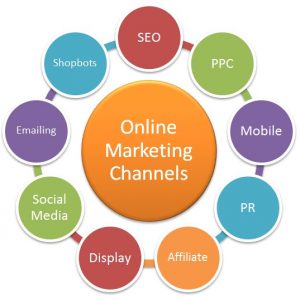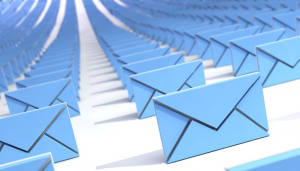Omni channel personalization is here to stay. Nearly 50% of U.S. brands are working to streamline their brand experience within the next five years, as they chase industry leaders like Google, Netflix and Amazon. They are already seeing the benefits of personalization. But as a savvy corporate marketer, you need to take an objective look at what is going on to make sure you’re not just getting caught up in a fad. You need to be sure the money and time you’re thinking of spending to streamline your customer experience is going to have a positive impact and, ultimately, an increasing ROI.
In this article, we’ll explore how and why personalization is becoming a marketer’s primary focus and the fantastic ROI that comes from it.
The Value Of Personalization And ROI
You can see it more and more online: companies of all sorts, like Google, Amazon, Netflix, and even a brick-and-mortar store like Best Buy, are integrating different forms of personalization to improve the customer experience and strengthen their brand.
You’ve probably had experiences with all of these companies, whether a personal Netflix account that you fiercely guarded, your email and browser settings, or your wish list on Amazon. All these industry leaders understand the value of personalization and have taken the wise words of Dale Carnegie’s 1936 timeless book, How to Win Friends and Influence People, to heart:
“Remember that a person’s name is to that person the sweetest and most important sound in any language.”
People LOVE hearing their name, and having things just for them – it’s hard-wired into us, and human nature!
Since the cumulative value of these companies is around 228.65 billion it must mean they’re doing something right; not only that but they’re on the leading edge of personalization and are implementing these features for one ultimate reason – because they increase their ROI.
As a business or marketer of any size or type, personalization isn’t something you can conquer in one leap overnight. It’s a new mentality that you can build into your business moving forward. The best part is, its positive effects can be felt immediately and the long term benefits will hit you like a wrecking ball. The result? Loyal customers who keep buying time after time, give you valued feedback, and don’t complain.
Too good to be true, right?
Wrong.
You can change your marketing direction just a little bit, and in a while, you’ll see significant changes. It’s a long game, and the psychological approach to omni channel personalization really seals the deal of why personalization is a must.
Let’s work backward to see exactly how it increases ROI:
Great profits and continually successful companies have loyal customers.
↓
Loyalty is created because the company provides consistent products and experiences the customer wants.
↓
Loyal Customers are repeatedly engaging with the company because they have an excellent system in place to deliver meaningful content.
↓
The company effectively introduces relevant content and recommendations that make customers feel special and keep them coming back.
↓
The customer will introduce their friends, who are equally valuable to the brand.
↓
Then repeats, following the “Good to Great” Flywheel effect, breaking through with increased sales.
And when you’re coming back, it means you’ll buy another product, or keep your subscription going, or click on more ads, which all increase ROI.
Personalization Improves Clarity
Your brand is made up of the small interactions that customers have with it, sort of like a mosaic. Though you, the artist, know how you want it to look, will all your customers, who can only see a tiny portion, understand what you’re trying to convey? If they don’t know what you’re selling, you’re not going to make any money.
It’s imperative that brands have a consistent experience which links things together. With an authentic omni channel-integrated, personalized brand, a customer can understand it from any point of access.
If someone started shopping on their laptop and want to finish the process on their phone, the experience needs to be the same. If it isn’t, that could mean one less sale. Additionally, you can’t disregard that data and pretend like it didn’t happen. The implicit data could mean that the user is showing your business to a friend or trying to use it in a new way, which could represent a new group of customers.
Using Google as another example, someone might have been looking for vacuum cleaners while they were out on their iPhone. Google will remember that search, and then offer vacuum ads when they hop on their laptop.
To not connect the dots or log the mobile search with their overall system is losing potential revenue for Google, which could have displayed new relevant ads to make more money.
Tracking all aspects and interactions of customers with your brand will lead to a higher ROI.
Different Channels
A channel is any source of traffic coming to your business. Traditional digital channels include computer websites, mobile sites, social media presence, communities like Reddit or LinkedIn, ads, email marketing,apps, devices like beacons or Internet of Things (IoT). When marketing, it is important to have a comprehensive view of all channels.
This channel fit doesn’t only matter to you; it matters more for your customers. If your target audience spends a lot of time on Instagram, it won’t make sense to spend your marketing budget for LinkedIn ads.
Moving one step further with the Google example, understanding what channel people are choosing to interact with your brand is also crucial. Smart businesses never rely on one channel, as shifts beyond their control like Google changing their algorithm can completely devastate traffic.
One way tracking channel data can lead to a higher ROI is by cross-pollination, or reaching new channels.
Say you typically interact with a company solely through their website and emails. They should be tracking this data and using it to their advantage in their ongoing Facebook ad campaign. With this knowledge, they have the potential to show you content they know you’ll love, on a different channel.
Since you like the brand and are a paying customer, you choose to watch one of their news feed videos, and maybe even share it.
Bam. That share does something special.
By sharing this video, you’re introducing the brand to all of your friends. Not only that, but you’ve recommended their content by liking and sharing it.
This didn’t happen by mistake. Smart brands track data between channels to save on ad testing and deliver content that has already been proven to work. This is exactly how brands are getting more exposure, and in front of more customers.
Knowing where customers hang out will increase your visibility to get you noticed on an untapped segment. If you know what your customers are doing on your site, it’s essential to send the right message to them to get them moving, and increase your bottom line.
Personalization + E-commerce Example = Best friends
If the last example of growing your brand by tracking email stats and then using them in ads may have seemed a little complicated, this e-commerce example will be a no-brainer.
Any customer using an e-commerce site needs to log in to an account to put items in their shopping cart. This alone can give marketers a significant advantage for tracking data to be used for personalized content. Pairing this with the knowledge that 75% of online shopping carts are abandoned before checkout, you have an easy opportunity to make some additional sales.
All those abandoned shopping carts may look like a digital ghost town; but, the truth is, there are lots of reasons for abandonment, and it usually isn’t because you’ve irritated them. Maybe they were running late, got distracted by their children, or other dinner was burning?
As an e-commerce business owner, if you could stop this or get some of those lost carts to check out, would you? Of course. There’s no better or easier way to increase your ROI.
Understanding your customers and using omni channel integration will make it easier than ever to bring those ghost carts back from the dead.
It’s been proven time after time that sending personalized emails shortly after abandonment increases conversion anywhere from 8 – 20%. This is something as simple as showing what items were in the abandoned cart. This, the simplest of cross-platform integrations is a simple tactic can lead to great results.
What It All Means
It’s important to understand that the more you know about your customers, the better you can market to them. This means that integrating data from all of your different channels can help get a clear image and connect the dots of your brand mosaic. This ultimately allows you to make data driven decisions that will help your bottom line.
Tracking multiple channels, on multiple platforms, analyzing the data and making informed decisions to increase ROI is a job for a full marketing team if you want to do it properly. Luckily, our team at NectarOM has had lots of experience with this. We’ve knocked it out of the park for industry leaders like Michael’s, Vitamin World and many more. Our track record speaks for itself. If your business is at the point where you have traffic and sales but know it can be brought up to the next level, consider getting in touch to see how we can help.
If you take one thing away from this, it’s that personalization is one of the best ROIs out there, with a significant shift happening industry wide, pushing towards complete omni channel personalization. The sooner you act to improve your customer experience, the faster you’ll see the results, and the longer they’ll last.










